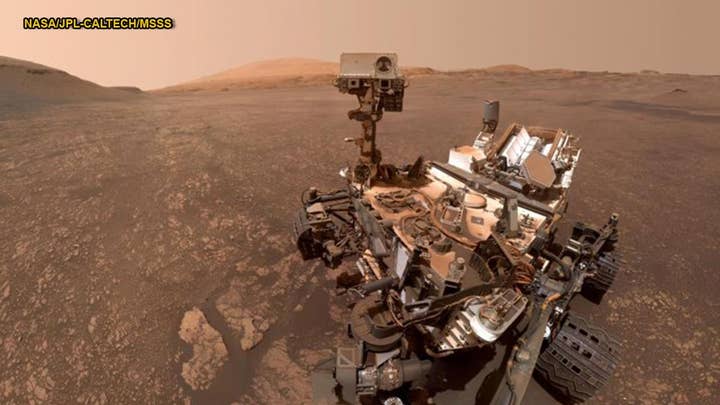Impact crater on Mars exposes mysterious material
A brand new impact crater has been discovered on the Red Planet Mars, exposing a 'darker material' underneath the reddish dust covering Mars' surface which has scientists stumped. The crater is a result of an asteroid hitting Mars sometime within the past three years. It's unclear exactly when the impact occurred, but the best guess is that the impact crater formed between September 2016 and February 2019.
Mars is at it again, teasing us with yet another vague sign that it might have life. Does it or doesn’t it? I’ve been waiting my whole life for an answer – maybe this is it.
The latest flirtation happened recently when NASA’s Mars rover Curiosity sniffed the planet’s air and detected an outburst of methane gas. A few days later – poof – it was gone.
The strange event set scientists’ hearts aflutter because the odorless, colorless gas is commonly produced by the metabolism, decay, and flatulence of living organisms. Is it possible Curiosity has detected signs of Martian microbes breaking wind?
MARSQUAKES MAY BE EVIDENCE OF GROUNDWATER
Mars’ extremely thin atmosphere is like Earth’s at an altitude of about 20 miles; and it contains less than 1 ppb (parts per billion) of methane, versus our air’s 1,866 ppb. That’s why the eruption – peaking at 21 ppb – was so noticeable, even though it’s really only like a drop of ink in an inground swimming pool (12,500 gallons of water).
It’s not the first time our next-door neighbor teases us like this. On several occasions since 2003, orbiters and sojourners from the U.S. and Europe have claimed to see abrupt effusions of methane.
This time, lucky for us, two orbiters – Europe’s Mars Express and Trace Gas Orbiter – happened to be looking in Curiosity’s general direction. So we should know fairly soon if they saw anything or not.
Meanwhile, European scientists have published a new, retrospective analysis of a 2013 methane flareup that peaked at a modest 7 ppb. The researchers believe they’ve pinpointed the source: a region of fractured ground and thin ice 300 miles east of Gale Crater, the giant basin where Curiosity happens to be located.
If the researchers are right, it might help clarify yet another Martian enigma: the seasonal waxing and waning of the planet’s miniscule baseline methane level, which climbs to a summer high of 0.65 ppb and dips to a winter low of 0.24 ppb. Maybe there’s a reservoir of methane trapped within the fractured rock beneath the ice that gets liberated during summer thaws.
It’s a plausible-enough theory. But still, it wouldn’t explain what’s generating the methane.
Is it being caused by gassy Martian lifeforms, as everyone is hoping? We certainly have plenty of windbags on Earth, from humans and cows to termites and legions of microbes.
Or is the Martian methane being forged simply by abiotic (nonliving), geochemical processes? On Earth, for instance, methane spews from volcanoes; terrestrial hot springs; powerful geysers at the bottom of the ocean; seeps in shallow, off-shore seafloors; and even from melting glaciers. Mars does appear to have, or have had, water, so this scenario is conceivable.
Is there any way to tell the difference between biologic versus geologic methane? Yes! It turns out the two have slightly different weights. Living organisms tend to produce methane with lighter versions (isotopes) of carbon and hydrogen, the ingredients of methane.
CLICK HERE TO GET THE FOX NEWS APP
The good news: right now the Trace Gas Orbiter has the necessary equipment to tell the two methanes apart. The bad news: to do the analysis it would’ve needed to have precisely the right location and orientation. Did it? Here again, we’re expecting to find out soon.
While we wait, I can’t resist pointing out the great irony of methane’s sudden celebrityhood. As a potent greenhouse gas, methane in Earth’s air is causing fits because of concerns about global warming. But just one planet over, it’s causing childlike excitement because it could conceivably crack in my lifetime one of the most seductive, bedeviling brain teasers of all time: Is there, or has there ever been, life on the Red Planet? The final answer, when it comes, will be a game-changer.



